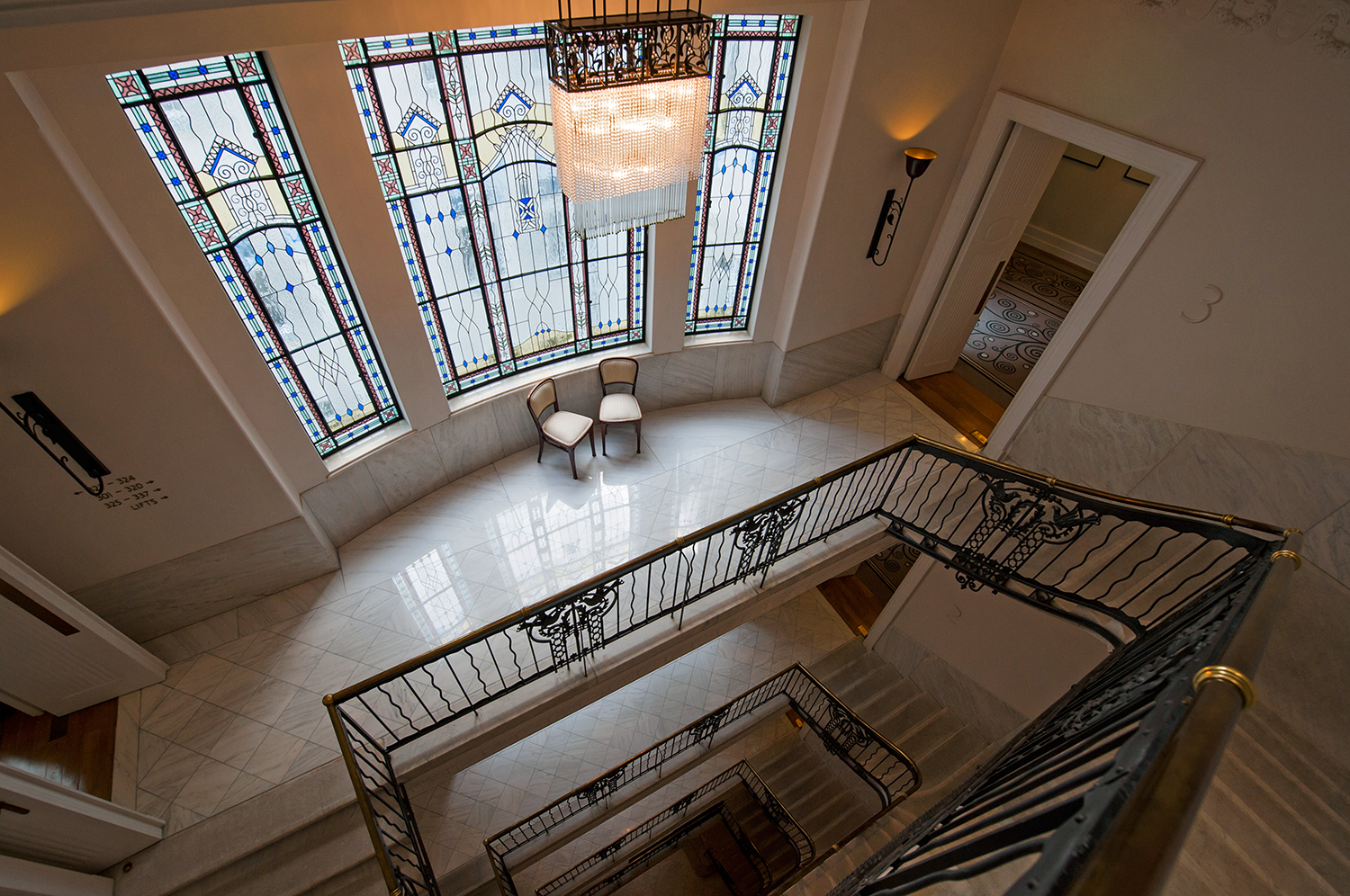Today the Gresham Palace is a luxury five-star hotel, replete with shimmering chandeliers, mosaic flooring and plush suites, all overlooking the Danube. But its history is far more than just a hotel. It was constructed back in 1906 as the international headquarters of London-based Gresham Life Assurance.
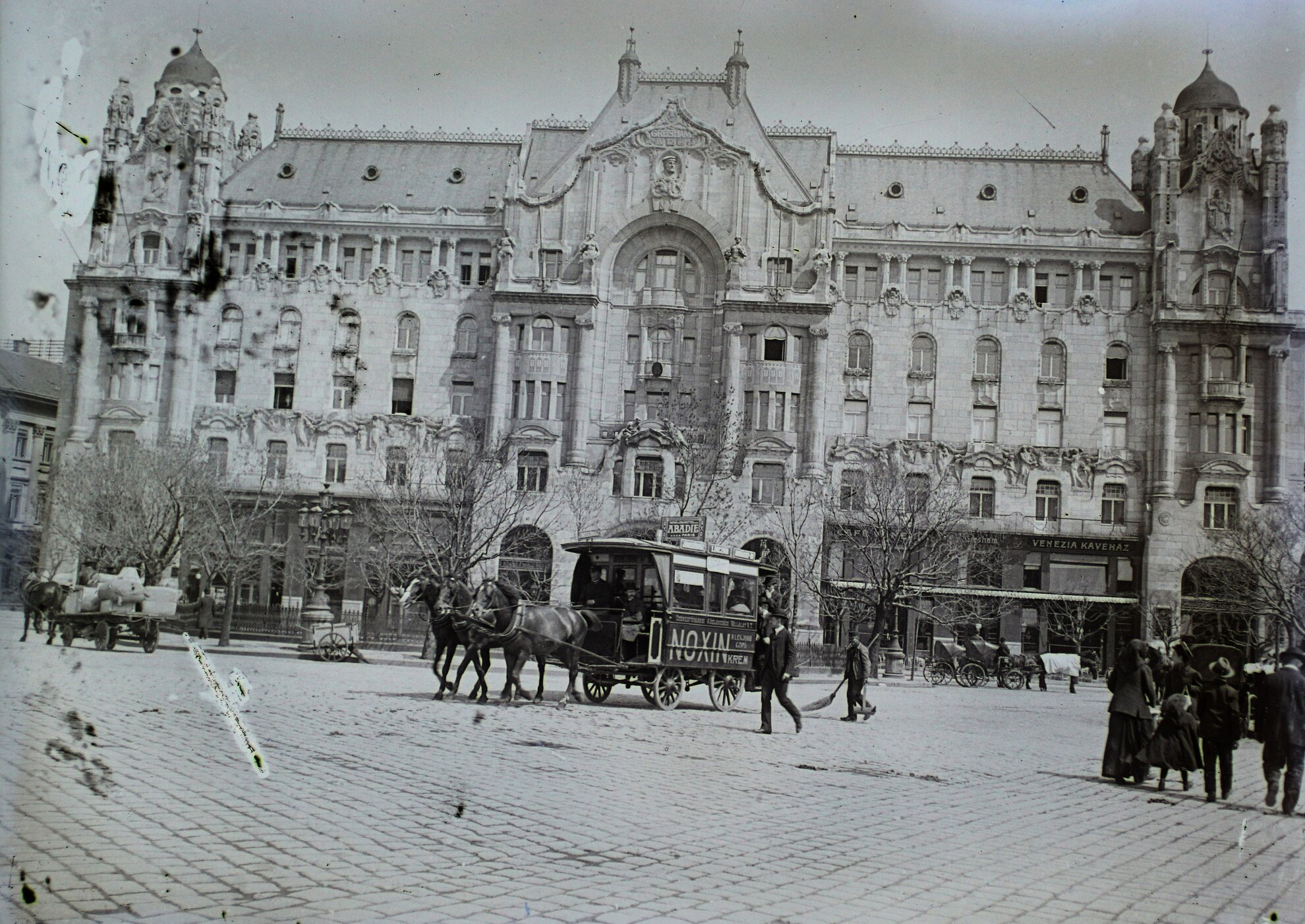
The company was named after Elizabethan financier Sir Thomas Gresham, who created the Royal Exchange in 1565. Their location in Budapest could not have been more ideal: right on the banks of the Danube, looking over the Chain Bridge and Buda Castle beyond. Originally located here was Nákó House, a Neo-Classical palace built in 1827 and home to a family of Greek entrepreneurs.
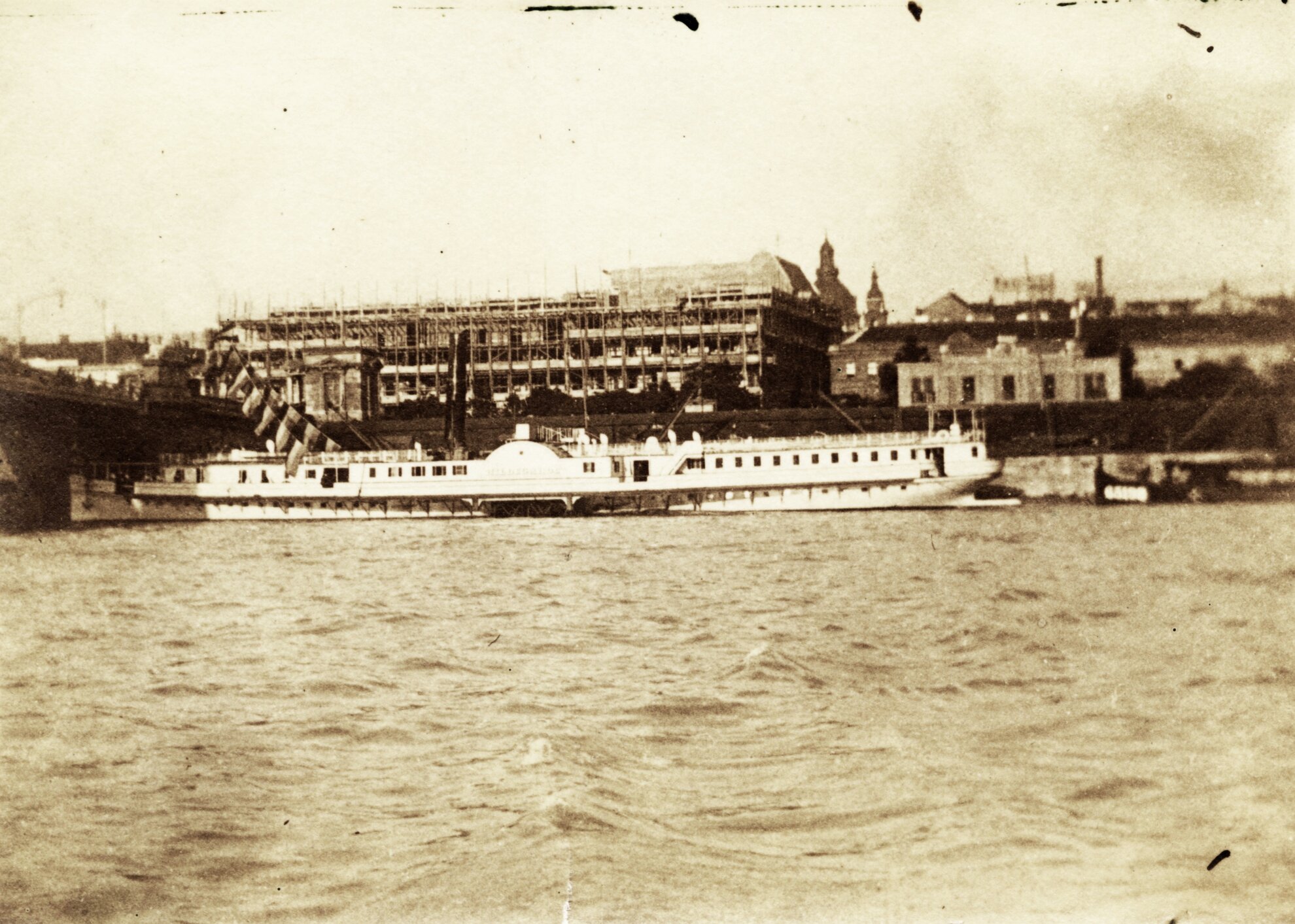
The Gresham company hired architects Zsigmond Quittner, and brothers József and László Vágó to demolish the old and ring in the lavish new. The budget for the construction was three million crowns – in those days, a tradesman earned around one crown per day!
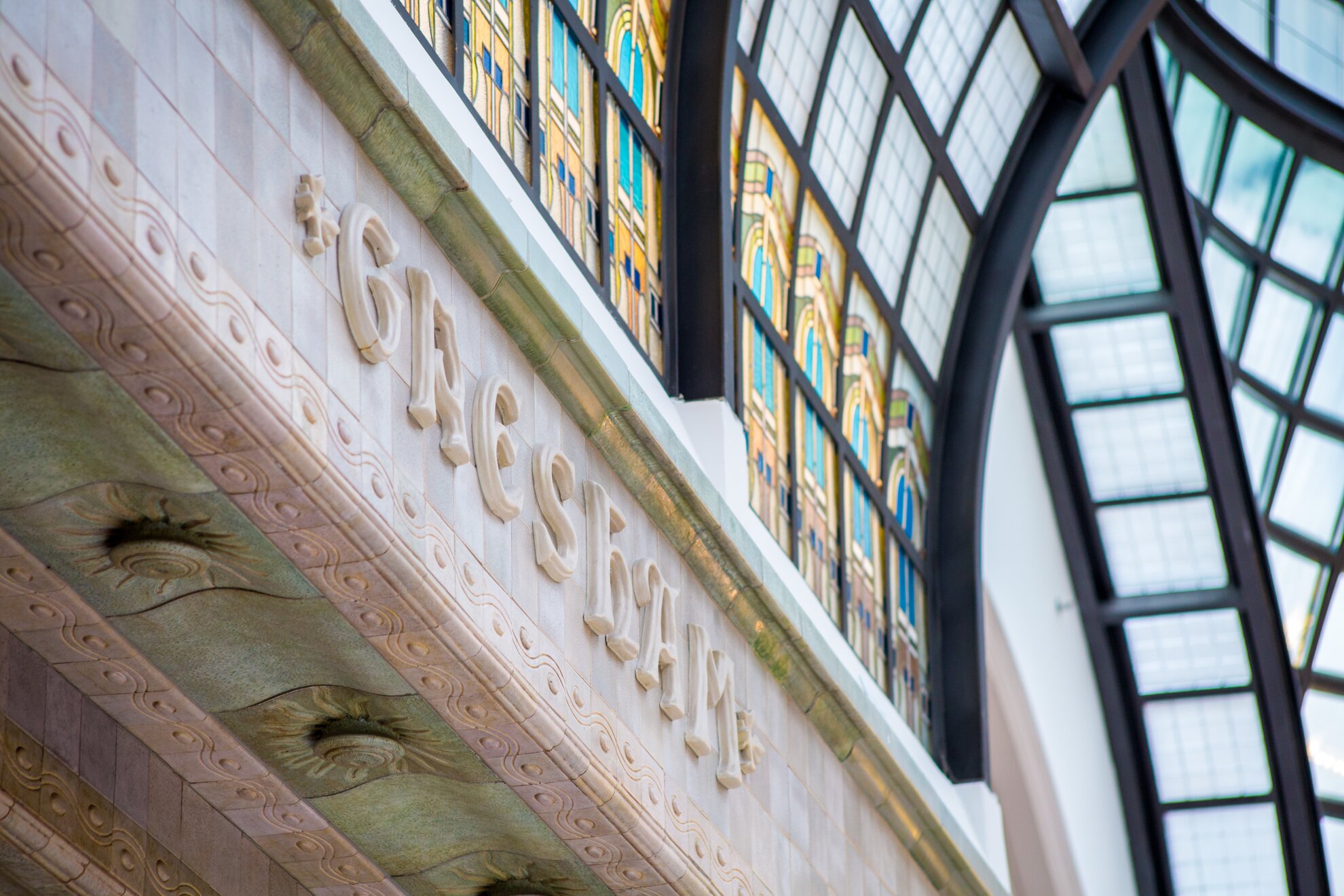
All three architects were followers of Art Nouveau, the architectural style which was sweeping across Europe at the turn of the century, characterised by flowing lines and natural forms.
The reliefs on the façade were created by Géza Maróti, while glass windows and mosaics were created by the famous Hungarian artist Miksa Róth, and resplendent Zsolnay ceramics were brought in from Pécs. Step through the doors and the intricate wrought ironwork by Gyula Jungfer is immediately noticed, featuring peacock motifs popular in the Art Nouveau genre.
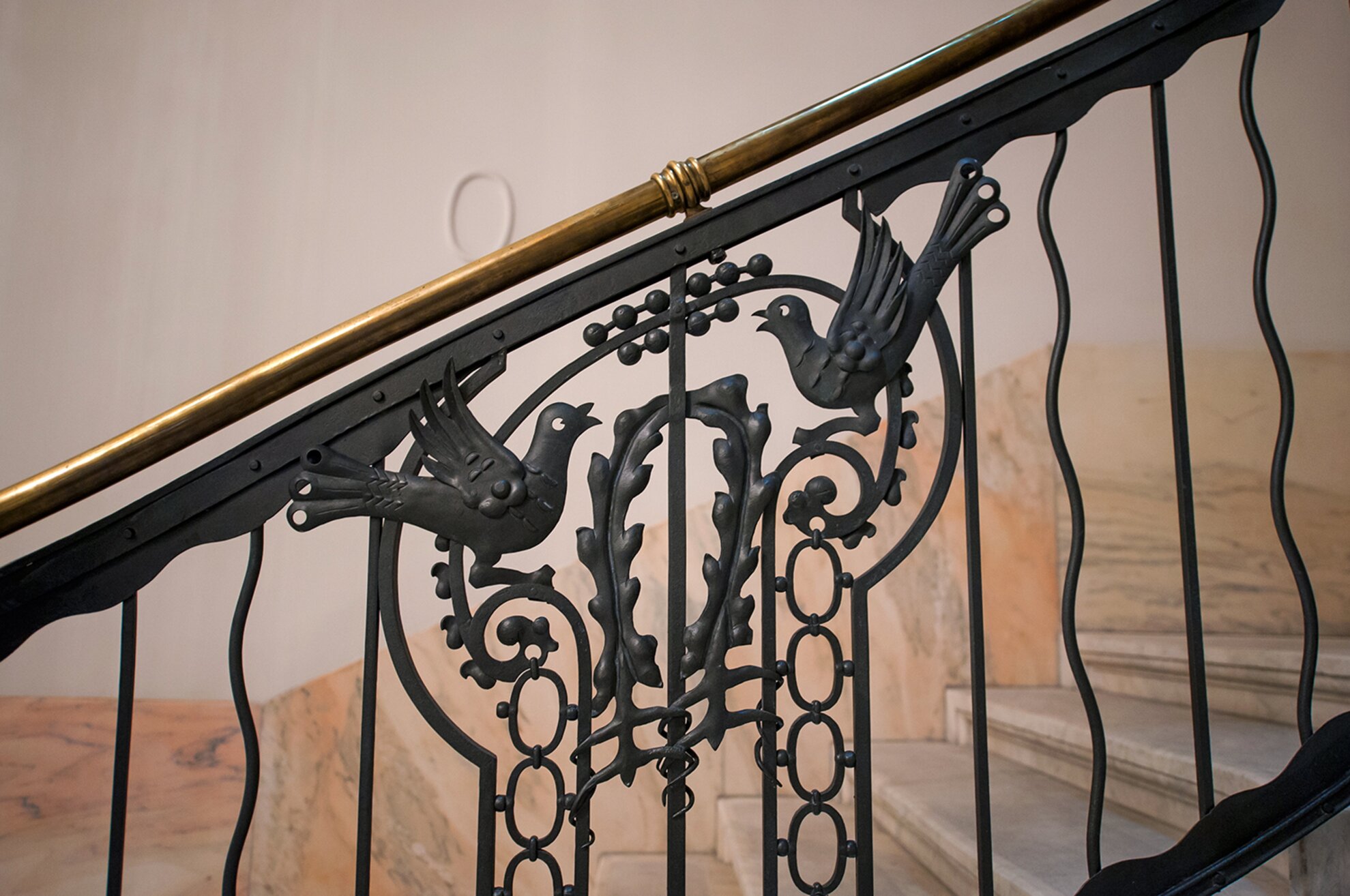
The Gresham was completed in 1906 and opened in 1907, with ground-floor shops and a café, and company offices above. Today these rooms are for hotel guests, with grand options such as the Presidential Suite, which looks directly out over the Chain Bridge.
The elegant apartments on the upper storeys housed famous actors and politicians in the early 1900s. In 1945, Soviet soldiers used the Gresham Palace as barracks. After the war the building’s shops and flats were nationalised, and the Gresham lost its allure.

2001 saw the Gresham completely renovated by Canadian chain Four Seasons, who transformed it into a luxury hotel, working to the original plans to renew its sumptuous interior. The hotel opened its doors in 2004.
A wander around the magnificent lobby offers ample evidence of the craftsmanship involved, from the intricate mosaic floors to the Preciosa chandelier. The downstairs lobby and reception are complemented with quiet areas where guests can recline and recharge, or buy expensive Tokaji wines.
On the first floor landing in the stairwell is the only remaining original stained glass window from the Gresham, featuring the Hungarian statesman Lajos Kossuth.
The hotel also features modern luxuries, like a top-floor spa with a sauna and steam room, and contemporary brasserie KOLLÁZS, featuring authentic French and Hungarian cuisine. The cocktail bar, Múzsa, is the most recent addition, whose décor and concept have been inspired by a century or more of Gresham heritage.
Whether visiting the Gresham as a guest, businessman or history buff, this palatial building is a glimpse into the luxury of 20th-century Budapest, and a time capsule of Art Nouveau style.



